A better way to say it would be "the output is common-ground with the source".
Hot Chassis
This term was relevant back in the Bad Old Days, when electronic equipment was allowed to be mains powered, without isolation or grounding, and may have had lax insulation. (I forget if actual metal chassis were allowed; wooden and Bakelite enclosures were common at least, offering some insulation in that case.) The advantage was, since the radio set (for example, the AA5 ("All-American Five") used five vacuum tubes, with their heaters wired in series, and supply voltage (B+) derived from a half-wave rectifier) could be directly mains powered, no transformer was required, saving on cost.
The difficulty is, circuits weren't wired well back in the day, and even if you plugged in the radio [what should've been] the right way around, maybe you got the "hot" line on the chassis anyway. And then 120VAC is touchable, and unhappiness ensues...
Mind, this remains true to this day, long after the adoption of polarized two- and three-prong receptacles. Polarized connectors make this confusion less likely, but the circuit may always be wired incorrectly (amateur, or incompetent professional, wiring), or indeed not be possible to wire "correctly" (some commercial or industrial installations may wire 208 or 240V between phases of a 3-phase circuit, in which case both leads will be hot).
Further reading on US receptacles: https://en.wikipedia.org/wiki/NEMA_connector
For these reasons, present standards are to treat mains as hazardous, regardless of how it is wired at the panel. This also addresses the condition that transients (surges) may raise the line-to-line or line-to-earth voltage to hazardous levels (several kV). Compliant equipment is insulated and isolated from mains, so that the user can never come in contact with it, even if a single point of failure occurs (say, one layer of insulation becomes compromised).
Common Ground
Since we will not use such a circuit for saving cost of equipment (i.e., the insulation is required regardless), we can still consider the value of this circuit by other means.
For example, in a switching power supply (SMPS), a high-frequency transformer is used to provide isolation, and we may have that one side of the secondary winding shall preferentially be grounded. This can happen due to the voltage on the winding, relative to others near it inside the transformer, and the capacitance between windings. (This is high-level stuff, so don't worry if it's going over your head; suffice it to say, high frequencies can have different ideas about what "grounding" means.) Voltage doubler circuits are not as often used in SMPS, but similar reasoning applies to the rectifiers that are used, as far as where the transformer winding's ground return should connect.
Author's Intent
While I can't speak for Mr. Schuler, it almost seems like one of those things that academics might latch onto -- something that is easily identified, and is (or at least used to be) useful. By this reading, it suggests an outdated sense of importance, or a lack of practical awareness; mains should most definitely not be tied to chassis these days. It does seem like it would be more reasonable to call it simply what it is: common ground. But I'm far from academics myself, and maybe these terms are still in common use in those circles. A definition or glossary would seem prudent, to address exactly such confusion as yours.

